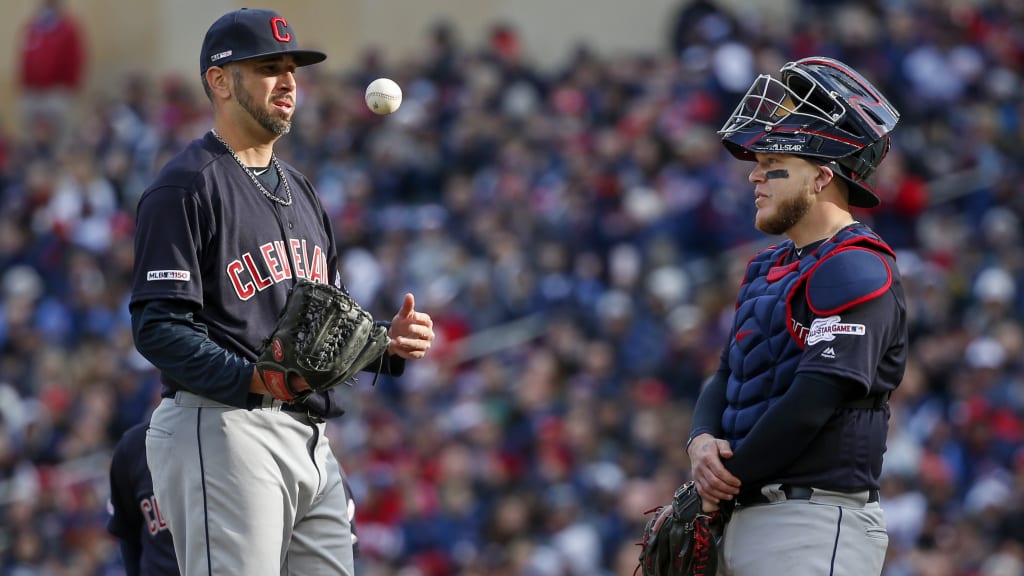
CLEVELAND -- Whether Indians manager Terry Francona is on board or not, there is change coming to Major League Baseball in 2020.
For the first time, a rule will be implemented that requires pitchers to face at least three batters or pitch to the conclusion of the half inning, excluding situations that involve injury or illness. This was created as an effort to reduce the number of pitching changes, thus cutting down the average time per game.
The change will cause all 30 clubs to have to strategize a bit differently than in years past, but the Indians will likely be one of the teams who will struggle with it the most.
“I don't understand it. I don't think I'm ever going to,” Francona said. “But we will certainly do the best we can and adapt, and I'm sure when we get to Spring Training, we'll spend a ton of time on the best way to embrace it -- because, I mean, when the season starts, nobody's going to care if I like it or dislike it.”
How much will it actually impact the club?
The numbers over the past few years have been clear: the number of LOOGYs (lefty one-out guys) in the bullpen -- and in the game -- are decreasing. Plus, the majority of relief appearances made across the Majors last year would not violate the new rule. However, the Indians led the Majors in 2019 in what will now be considered violations with 44 instances, according to the Elias Sports Bureau. The Cubs and Diamondbacks were right behind them with 39 violations.
The Tribe also faced three or more hitters in 426 individual appearances last season, which ranked the fewest among all 30 clubs. The Red Sox owned the most with 566.
Undoubtedly, Francona prefers to cater to matchups, and his methods worked last year to lead a bullpen that averaged the slowest fastball in the Majors (90.8 mph) to the lowest ERA in the big leagues from the start of the season through the end of August (3.51). But now, he said he’ll have to change his managerial style.
Watch the splits
This new rule now puts specialist relievers like left-hander Óliver Pérez and righty Adam Cimber in tough spots. Why? The numbers may just speak for themselves.
When used in optimal matchups during the 2019 season:
Pérez vs. left-handed batters: .207 batting average, .607 OPS, 26 strikeouts, 95 plate appearances
Cimber vs. right-handed batters: .244 batting average, .645 OPS, 31 strikeouts, 182 plate appearances
When used outside of their typical matchups:
Pérez vs. right-handed batters: .286 batting average, .889 OPS, 22 strikeouts, 78 plate appearances
Cimber vs. left-handed batters: .296 batting average, .943 OPS, 10 strikeouts, 62 plate appearances
Of Pérez’s 67 overall appearances last year, 25 would be illegal in 2020, while just five of Cimber’s 68 outings would violate the new rule. It’s not that the lefty and the submarine hurler can’t last at least three batters or conclude an inning, it’s the concern of what could happen if they have to face opposite-handed hitters.
For example, the Indians could still try to use Pérez – or Cimber -- in a similar role, calling on him to enter an inning with two outs and a lefty at the plate. If he comes in and gets the out, then there’s no harm. But say there is a powerful right-handed hitter on deck when he enters, and he doesn’t get the first batter out. Then the Indians are left holding their collective breath that he can escape the jam.
“We get to the ballpark early and we stay late, and the object is to try to do it better than the other people,” Francona said. “Sometimes, you're successful. Sometimes, you're not. But when you start to leave it to chance, that kind of goes against everything we live for and we believe in. And it's a hard one for me. I'm struggling with this.”
Importance of Karinchak and Clase
Although Pérez and Cimber may struggle to find their footing to start the season until everyone is adjusted to the new strategies this rule will bring, it’s important to note just how crucial the two young arms could be.
The Indians got a quick glimpse of James Karinchak in September, as he posted a 1.69 ERA in 5 1/3 innings. And while it may have been a small sample size, his splits against left-handed and right-handed hitters nearly mirrored the numbers he posted in the Minors last season:
Facing righties in MLB: .222 average, .633 OPS, one strikeout, 10 plate appearances
Facing lefties in MLB: .091 average, .174 OPS, seven strikeouts, 12 plate appearances
Facing righties in the Minors: .203 average, .591 OPS, 48 strikeouts, 90 plate appearances
Facing lefties in the Minors: .063 average, .241 OPS, 34 strikeouts, 57 plate appearances
Karinchak’s numbers against lefties are absolutely dominant, but the key is that the 24-year-old can also get righties out consistently.
Now let’s add newly acquired Emmanuel Clase to the mix. He will bring some velocity to the Tribe’s ‘pen, owning a triple-digit cutter that’s played well in the big leagues thus far. In 2019, he threw 238 pitches that clocked in at 98+ mph, while the Tribe's pitchers only threw 12, collectively.
Last season, Clase made 21 appearances for the Rangers and posted a 2.31 ERA in 23 1/3 innings. He split the first half of the year between Class A Advanced and Double-A, pitching to a combined 2.82 ERA with 50 strikeouts in 44 2/3 frames while holding opponents to a .226 average.
When he got the call to the big leagues in August, his platoon splits proved that the Indians may have another reliable arm that they can lean on:
Facing left-handed batters: 11 1/3 innings, 10 hits, one homer, two walks, 10 strikeouts, 1.06 WHIP
Facing right-handed batters: 12 innings, 10 hits, one homer, four walks, 11 strikeouts, 1.17 WHIP
It’s certainly going to be an adjustment for the Indians, who were the most common offenders of the future rule last season. But they may be able to breathe a little easier, knowing they have some up-and-coming talent that could evolve into two huge weapons to combat the new three-batter minimum rule.




